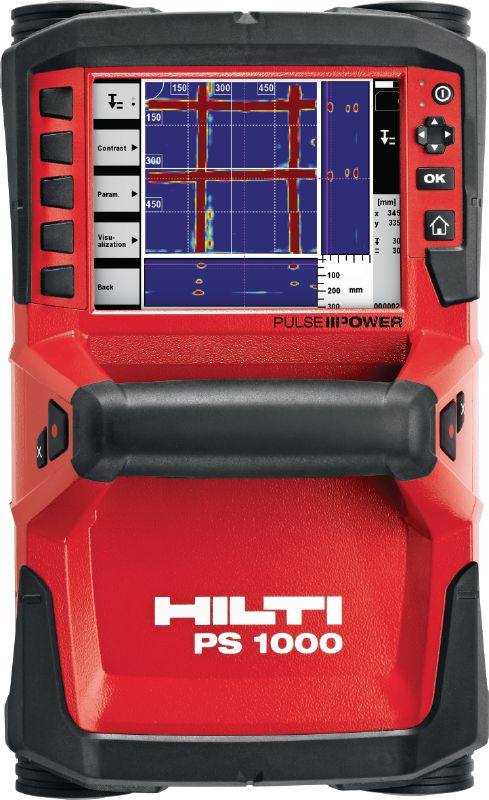Enhance Your Project with RainierGPR Concrete Scanning Solutions
Enhance Your Project with RainierGPR Concrete Scanning Solutions
Blog Article
Exploring the Key Advantages of Concrete Scanning in Building Projects
In the realm of modern building techniques, the application of concrete scanning innovation has emerged as a crucial device for making sure project efficiency and architectural honesty. From improving safety and security steps to accurately detecting utilities hidden underneath the surface area, the advantages of concrete scanning are diverse. The capacity to enhance project timelines and minimize costs while protecting existing frameworks is a testament to the value this innovation gives the building sector. As we dig into the nuanced advantages of concrete scanning, it becomes evident that its influence prolongs far past surface-level evaluations, providing a look right into the intricate internet of benefits waiting to be uncovered.
Boosted Safety Steps
Making use of sophisticated concrete scanning innovation improves safety and security procedures on building websites by providing precise discovery of prospective dangers concealed underneath the surface. This modern technology allows construction teams to determine rebar, conduits, post-tension cords, and other obstructions prior to excavation or exploration, considerably lowering the danger of crashes. By determining these aspects specifically, workers can avoid destructive critical structural elements, hence avoiding injuries, delays, and pricey repairs.
Additionally, concrete scanning plays a vital role in guaranteeing the integrity of existing frameworks during expansions or improvements. By finding weak points, spaces, or degeneration within concrete aspects, designers can resolve these concerns proactively, boosting the general safety and security and longevity of the structure. This proactive method not only minimizes the threat of structural failures yet likewise minimizes the possibility for crashes triggered by unpredicted architectural shortages.
Fundamentally, the application of concrete scanning technology functions as an aggressive safety and security step that safeguards both building and construction workers and the structural integrity of structures, eventually adding to the general success and performance of building and construction jobs. - RainierGPR Concrete Scanning
Accurate Detection of Energies
Concrete scanning technology helps with specific recognition of underground energies, improving building and construction website safety and security and effectiveness. Accurate discovery of utilities is important in construction tasks to prevent costly problems, job delays, and most significantly, ensure the security of workers and the general public. By making use of innovative scanning technologies such as ground-penetrating radar (GPR) and electromagnetic induction, building teams can map out the area of hidden pipes, cords, and various other energies with high levels of accuracy.

Time and Expense Performance

Concrete scanning innovation allows building teams to accurately find rebar, post-tension cables, and other ingrained items within concrete frameworks. This accurate info aids in avoiding expensive blunders such as accidental damage to important elements throughout exploration, reducing, or coring tasks. Furthermore, by recognizing prospective hazards in advance, the demand for costly fixings or rework because of damages can be decreased, resulting in cost financial savings for the job.
Moreover, the capacity to swiftly and precisely spot utilities beneath the surface without creating any damages not just saves time however also stops pricey interruptions to existing facilities. Overall, the time and expense effectiveness advantages of concrete scanning make it an invaluable device for boosting building and construction project administration and implementation.
Conservation of Architectural Honesty
Protecting the structural honesty of structures and facilities is critical in making sure long-term security and safety. Concrete scanning plays a critical role in this conservation process by enabling building professionals to important link identify prospective threats to the structural honesty of a building or facilities prior to they intensify right into major concerns. Through using sophisticated scanning innovations such as ground-penetrating radar (GPR) and electromagnetic induction, construction groups can non-invasively examine the condition of concrete frameworks, find rebar, post-tension cable televisions, and other ingrained components, and recognize any kind of voids, cracks, or degeneration within the concrete.
Improved Task Planning
In order to guarantee the effective execution of construction projects, thorough attention to detail and thorough planning are essential parts that stem from a comprehensive understanding of the structural problems recognized through concrete scanning. Eventually, including concrete scanning right into the job planning phase improves sychronisation among team participants, fosters proactive analytic, and adds to the effective delivery of construction projects within budget and schedule constraints.
Conclusion
In final thought, concrete scanning supplies countless advantages in building and construction tasks. By enhancing precaution, properly detecting utilities, boosting time and expense effectiveness, preserving architectural stability, and helping in task preparation, concrete scanning proves to be an important device for effective project execution. Its capacity to reduce dangers, raise performance, and ensure project honesty makes it an indispensable property for construction professionals.
In the world of contemporary building practices, the utilization of concrete scanning innovation has actually emerged as a pivotal device for making sure task effectiveness and architectural integrity.Concrete scanning technology enables construction teams to properly situate rebar, post-tension wires, and other embedded objects within concrete structures. Via the use of sophisticated scanning innovations such as ground-penetrating radar (GPR) and electro-magnetic induction, construction groups can non-invasively evaluate the condition of concrete frameworks, locate rebar, post-tension cable televisions, and other embedded aspects, why not find out more and determine any kind of spaces, splits, or degeneration within the concrete.
In order to make sure the effective execution of building and construction jobs, thorough interest to detail and thorough preparation are necessary components that stem from a detailed understanding of the structural conditions recognized via concrete scanning. Inevitably, integrating concrete scanning into the job preparation phase improves control amongst group members, promotes proactive analytic, and adds to the effective delivery of building and construction projects within budget and timetable restraints.
Report this page